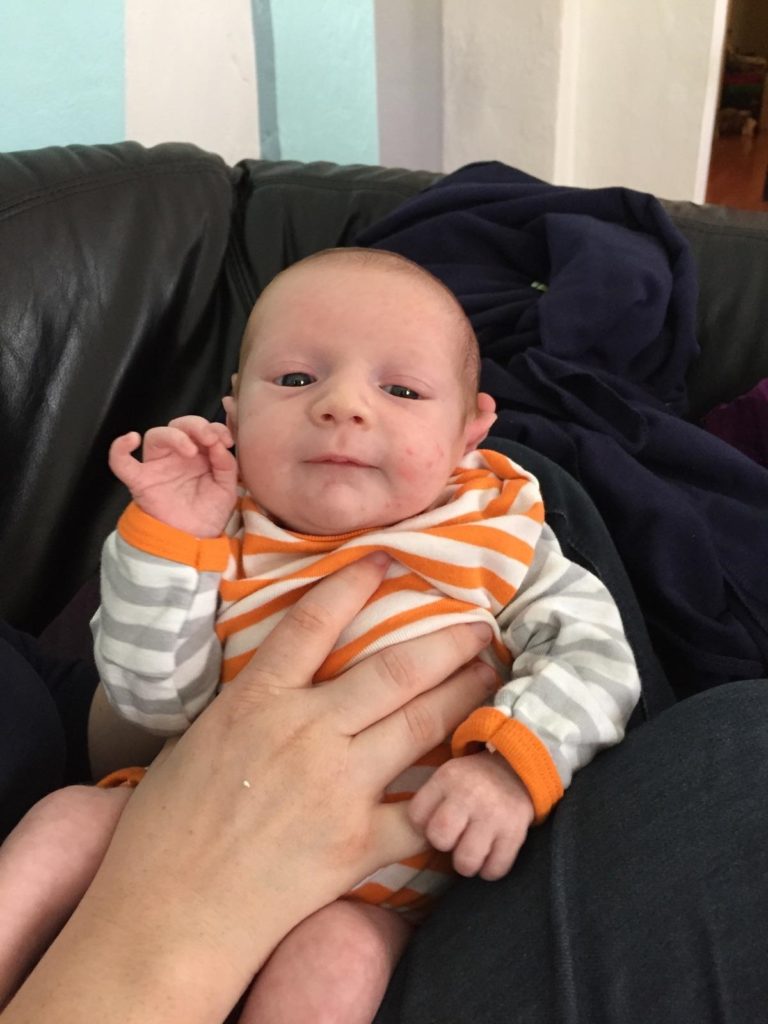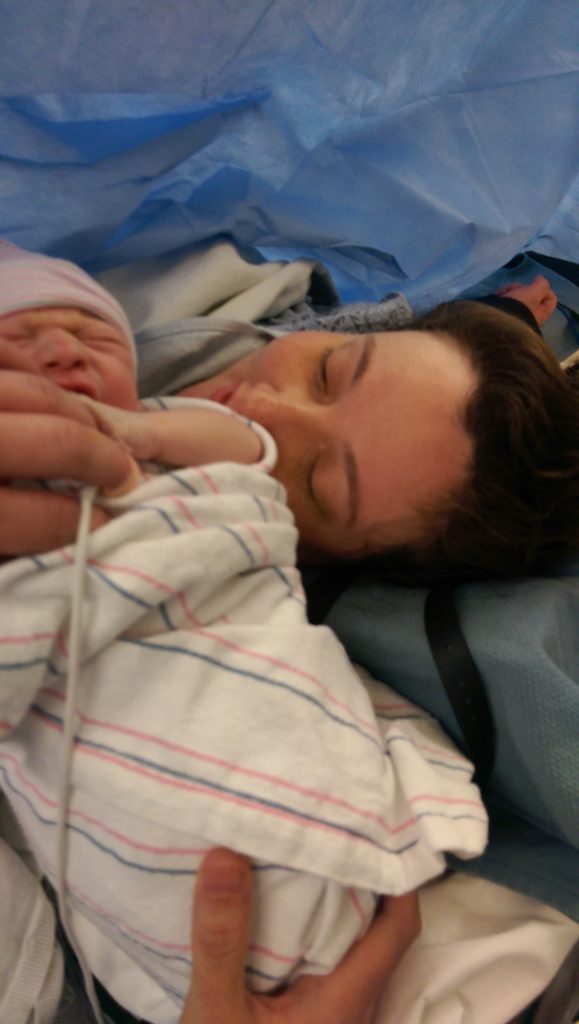As the distance between the parking lot and hospital grew smaller, my footsteps became slower and slower, holding on to those last few moments outside. The familiarity of the walk made the last two years and 15 days disappear, and I found myself pausing before the automatic doors of a hospital again. It would be the first time I’d entered one since my mom died; this time I was going to be the patient.
I wasn’t in labor, but my OB-GYN wanted me to be. At my 40-week appointment earlier that day I had been diagnosed with preeclampsia, a pregnancy condition that is often characterized by high blood pressure, protein in your urine, and blurred vision and increases your risk for seizures, placental abruption, stroke, and postpartum hemorrhage. If you’re close to full term, the most effective treatment for preeclampsia is delivery, so my spouse and I were told to go to the hospital. It wasn’t until after I gave birth that I learned that my mom had had preeclampsia with me, placing me at a higher risk of developing the condition.
Waiting without really knowing what was happening, knowing what was coming but not knowing what it would look or feel like.
I checked in and was given a room; the doctors confirmed the preeclampsia diagnosis, and I was moved to a birthing room. I was induced and given magnesium sulfate to lower my blood pressure. I was covered in wires, hooked up to machines, and couldn’t get up to use the bathroom without a nurse’s help. For 24 hours, not much happened.
Two years before, my mom had grown sicker. She had endometrial cancer, and a year before that, a doctor had told her that she had just a year to live. Depression and nightmares took hold of her. As time passed, however, and she still felt relatively well, she decided that that doctor had been wrong, and I wanted to believe, too. But then the cancer metastasized and took up residence in her lungs, her brain. She didn’t feel like eating and tired easily. Terrible stomach pain sent her back to the hospital for the final time.

Now, it felt like I was back in my mom’s hospital room, machines hastening or slowing a natural process. Waiting without really knowing what was happening, knowing what was coming but not knowing what it would look or feel like. I vacillated between boredom and anxiety, my heart beating faster, my breath quickening. I felt stuck in the moment, unable to move.
Things sped up when my doctor came in to break my water, and the contractions almost immediately became stronger. I tried to prepare for the next ones, but right away they were coming one on top of the other. I scrambled around on the bed, unable to contain myself. The nurses tried to rein me in, fearing I would pull out the wires or fall. As if I had some say over what my body was doing.
No one would say it definitively, that my mom was dying, so I had to Google “signs of death” to confirm.
I wondered if this is how my mom had felt in that other hospital room two years before. As she pulled at the tubes and moaned. As she lost her ability to speak, her glazed eyes staring off into the distance, her breathing becoming labored, her movements jerky. I’d never seen someone die before. No one would say it definitively, that my mom was dying, so I had to Google “signs of death” to confirm.
I put off an epidural for hours, until I was exhausted, defeated. “Hold still, hold still, hold still,” the anesthesiologist said as my body shook with another contraction. “Wait!” I said. When I thought I could hold still, she placed it in my back. She ended up not putting it in quite right, so the pain dissipated from one side, but refused to relinquish control of the other. Still, it gave me enough relief to allow me to sleep.
When I awoke, the contractions had slowed down and my dilation wasn’t far enough along for my doctor. We were in different places in our plans, had two different mind-sets. I was still holding on to the prospect of a vaginal birth and my doctor was impatient with my progress, just like my mom’s doctors had been with my parents’ lack of decision, with their refusal to consider a transfer to hospice. They pleaded with us to move on to the next step, to let go.
Finally, I let go: It was time for a C-section. The procedure was quick. I felt an uncomfortable pressure and braced myself in anticipation of it deepening, but instead it slowly dissipated. My son was placed on my chest, and I looked down at his pink face and distant gaze, trying to get a good look.
Because of the C-section, I had to spend an extra day or two recuperating at the hospital. I itched to go home. I couldn’t tune out the pinging machines or the constant state of alarmed alertness that possessed my body.

I froze when I saw my son’s arms involuntarily jerking just like my mom’s limbs had in those last days at the hospital—a common reflex among the dying.
I obsessed about it on my own, until it happened in front of a nurse. Afraid of what she’d say but too nervous not to ask, I pointed the twitching out to her. “Oh that. That’s normal in newborns. It happens when they get startled.”
Now, I’m finding that there’s something reassuring about knowing that the signs of death can also signal birth.
No one had ever mentioned to me that when babies get startled—which is often, especially in a hospital environment—their arms and legs jerk. That their eyes might look a bit glassy, their breathing a bit fast.
I hadn’t expected that the beginning of a life would look and feel a lot like its unwinding, with all the disquietude and amazement that accompanies such inexorable change. Now, I’m finding that there’s something reassuring about knowing that the signs of death can also signal birth. It feels like closure to see the life cycle up close, to see my kids grow, to observe little bits of my mom pop up in them, and to tell them stories about her whenever I can.
